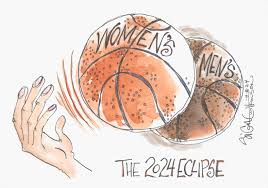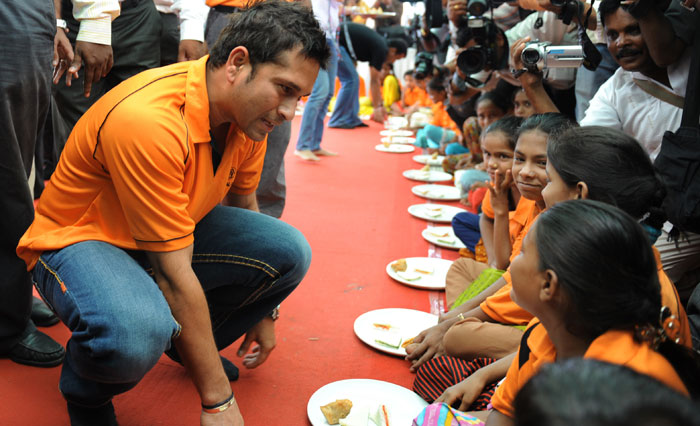1
Section One: The Fundamentals
A) What do we know about sport? What are common assumptions we make about sport and society?

| While statements from Exercise 1 suggest sports universally build character and offer opportunities, this isn’t always true for everyone. For example, not everyone can afford the costs associated with some sports, limiting their accessibility. The idea that sports always promote good character overlooks potential negative behaviors like aggression. Also, the concept of sports as a universal language may not consider how cultural differences can influence the perception and value of sports in various societies. These points show that while sports can be beneficial, they do not provide the same advantages to all, due to underlying social inequalities. |
Exercise 3: Notebook prompt
What are some other metanarratives about sport that you are familiar with? Find an image or video clip or draw something yourself that captures this idea…
So what? Why does any of this matter? Does it matter? As something we grow up with – live with – play through – we don’t often interrogate the meanings of sport, and perhaps we don’t want to.
But being aware of these assumptions and metanarratives is especially important, I would argue, because of the centrality of sport to our everyday lives, the role that sport plays in shaping our childhood and worldviews and….. [finish that thought]
| Being aware of these assumptions and metanarratives is crucial because it helps us understand how sports influence our perceptions and interactions with the world. It shapes not just our leisure activities but also our values, our community interactions, and even our national identities. This awareness can lead to more inclusive and equitable sports cultures that recognize and value diversity in experiences and perspectives, moving beyond mere competition to become a true reflection of our societal values and struggles.
|
B) What is social justice?
Exercise 4: Padlet Prompt
Think back to the last section and try to look at some of the ideas we discussed differently. How might sport and social justice actually co-exist?
Record any images, video clips, or gifs you added to the padlet and identify a point of intersection between sport and social justice (can be an issue or a barrier or a debate or something you would like to explore in more depth in this course) . Screenshot or paste in your response below.
| This image of Sachin Tendulkar interacting with children highlights the intersection of sport and social justice. It shows how athletes can use their influence to contribute beyond the field, engaging in charitable and community-driven initiatives. Sports figures like Tendulkar often become role models, not just for their athletic achievements but for their efforts in addressing social issues like poverty, education, and hunger. This reinforces the idea that sport is more than just competition; it can be a platform for positive change. This image aligns with the broader discussion of how athletes can impact society, breaking barriers and advocating for equality and access to basic needs. It also challenges the perception that sports are separate from social issues, proving that they can be a powerful tool for community development and justice.
|
C) Social Justice Reading
(note: this activity is optional!)
D) KINESIOLOGY AND SOCIAL JUSTICE
Exercise 5:



Exercise 6:
What are the implications of bodies-at-risk discourse and the refusal to understand the health gap from a social justice perspective, according to the authors of this article?
| The idea presented by Harrison, Azzarito, and Hodge about health being treated as something you can buy and sell like a product is a big issue. They suggest that in Western societies, people see health as a commodity something mainly available to those who can afford it. This kind of thinking turns health into a luxury rather than a basic right everyone should have.
This approach creates a larger gap in health between the rich and the poor. The term “bodies-at-risk” is used to describe people who are often blamed for their own health problems because they can’t afford healthier lifestyles. This blame is unfair because it ignores the big picture, which includes factors like poor access to healthy food, safe living conditions, and good education, all of which significantly influence someone’s health. The authors argue that we shouldn’t just focus on individual responsibility when it comes to health. Instead, we need to look at the larger social issues that make it hard for some people to stay healthy. They believe it’s important to work towards a society where health is seen as a right for all, not just something for those who can pay for it. This means making sure everyone has equal access to things that promote good health, like medical care, nutritious food, and a safe environment. By doing this, we can start to close the health gap and make sure everyone has a fair chance at a healthy life.
|
Section Two: Sport Feminism
Exercise 7: Notebook Prompt
What is feminism? What does it mean to you? Choose one of the images below and explain how it captures your understanding of feminism (or find one that does speak to you and paste this into your pressbook with an explanation of why it matters to you.
| The first image on the left shows Frida Kahlo, a famous Mexican artist. She represents feminism well because she broke traditional rules for women through her paintings and life. Frida Kahlo often painted herself and openly showed her struggles and feelings in her art. She dealt with a lot of personal pain and societal pressure, but she always stayed true to herself and her beliefs.
Kahlo’s approach to life and art makes her a strong symbol for feminism. Feminism is about fighting for women’s rights and equality, and Kahlo lived her life in a way that challenged what was expected of women. Her courage to be herself and to express her true emotions and pains in her art inspires many people. Choosing Frida Kahlo’s image is meaningful because it highlights the importance of being yourself and standing up for what you believe in, which are key parts of feminism. Her story encourages others to fight for their rights and express themselves freely, no matter the challenges.
|
Exercise 8: Notes Prompt (optional)
NB: Cornell notes is a great resource that teaches effective notetaking. Unfortunately, our system can’t save notes taken in the H5P app, so this is fully optional.
Exercise 9: Crossword Activity

Exercise 10: Padlet Prompt

|

|
|




